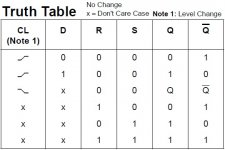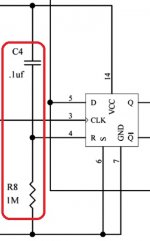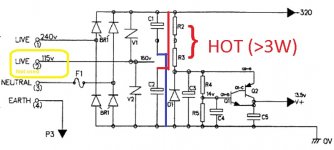Hi everyone , and a Happy New Year to y'all .
I recently in a nostalgia moment bought myself an old Linn Axis Mk2 ... back in the early nineties this was my first good turntable before i moved onto a couple of LP12s ... but i loved my Axis for its simplicity , and it sounds great even now with a good DV MC cartridge left over from my last LP12 .
It works and runs fine , only issue is as soon as mains power is switched on the platter starts to run .... not a real problem , but i have just disassembled it to give to my father to replace all the capacitors on the board ... he knows what he's doing with soldering whereas im a bit of an novice 🙂
Can anyone point me in the direction of which component could cause this problem and it can be changed out at the same time .
I have read about it previously on tinternet but i just cant find it now i want it !!!
many thanks in advance
Ian
I recently in a nostalgia moment bought myself an old Linn Axis Mk2 ... back in the early nineties this was my first good turntable before i moved onto a couple of LP12s ... but i loved my Axis for its simplicity , and it sounds great even now with a good DV MC cartridge left over from my last LP12 .
It works and runs fine , only issue is as soon as mains power is switched on the platter starts to run .... not a real problem , but i have just disassembled it to give to my father to replace all the capacitors on the board ... he knows what he's doing with soldering whereas im a bit of an novice 🙂
Can anyone point me in the direction of which component could cause this problem and it can be changed out at the same time .
I have read about it previously on tinternet but i just cant find it now i want it !!!
many thanks in advance
Ian
******* WARNING - LETHAL VOLTAGES ARE PRESENT ON THE AXIS PCB *******
It's NOT a component failure. It's a design compromise, which can be rectified with 2 additional components and a considerable amount of mucking about.
The CMOS 4013 'Table of Truth' tells no lies!
If Set and Reset are tied together @ GND potential, which function wins on power up?
Flip a coin...

Reset (U1 pin 10) needs to win!
(The required components were installed on the Valhalla).

Alternatively, pressing the 'Start' button once or twice will resolve the issue.
If you leave the AXIS connected to mains power in standby mode (LEDs extinguished) and experience a mains power interruption, the AXIS may start spinning when power is restored.
The obvious solution is to disconnect it from mains power when not in use. It prevents the electrolytics from drying-out and prevents unnecessary scorching of the PCB under R2 & R3 (R2 & R3 dissipate >1.5W continuously when connected to the mains).
Don't forget to replace C19 - when it fails (short - as tants do...), the AXIS goes into cardiac arrest.
If you don't require the voltage doubler, you can vastly reduce ripple on the +320V rail by using >350V rated capacitors (C1 & C2) across the rails. F1 may have to be uprated.

Good Luck!
ADDENDUM: Please read this.
... only issue is as soon as mains power is switched on the platter starts to run ....
Can anyone point me in the direction of which component could cause this problem and it can be changed out at the same time .
It's NOT a component failure. It's a design compromise, which can be rectified with 2 additional components and a considerable amount of mucking about.
The CMOS 4013 'Table of Truth' tells no lies!
If Set and Reset are tied together @ GND potential, which function wins on power up?
Flip a coin...

Reset (U1 pin 10) needs to win!
(The required components were installed on the Valhalla).

Alternatively, pressing the 'Start' button once or twice will resolve the issue.
If you leave the AXIS connected to mains power in standby mode (LEDs extinguished) and experience a mains power interruption, the AXIS may start spinning when power is restored.
The obvious solution is to disconnect it from mains power when not in use. It prevents the electrolytics from drying-out and prevents unnecessary scorching of the PCB under R2 & R3 (R2 & R3 dissipate >1.5W continuously when connected to the mains).
Don't forget to replace C19 - when it fails (short - as tants do...), the AXIS goes into cardiac arrest.
If you don't require the voltage doubler, you can vastly reduce ripple on the +320V rail by using >350V rated capacitors (C1 & C2) across the rails. F1 may have to be uprated.

Good Luck!
ADDENDUM: Please read this.
Last edited: